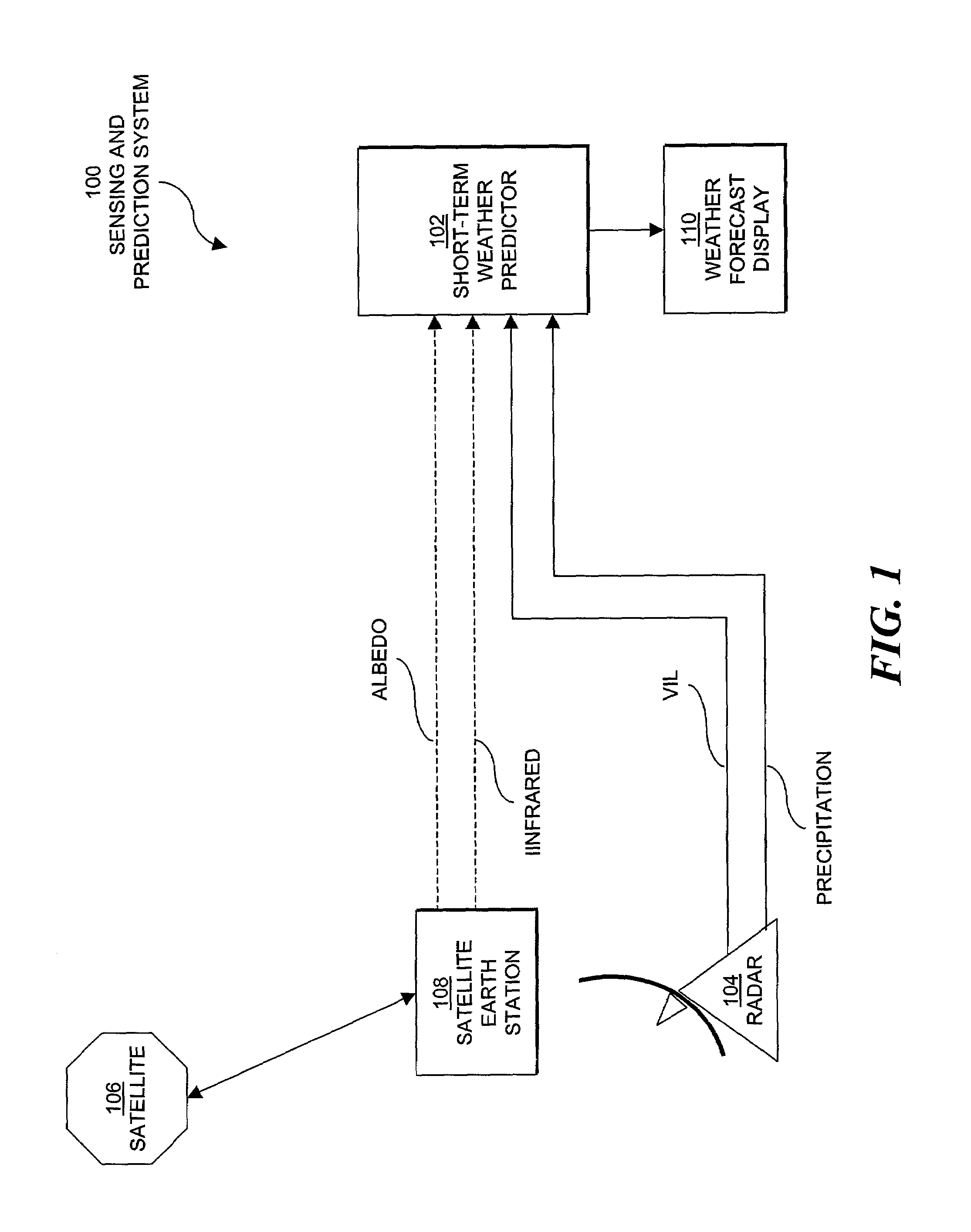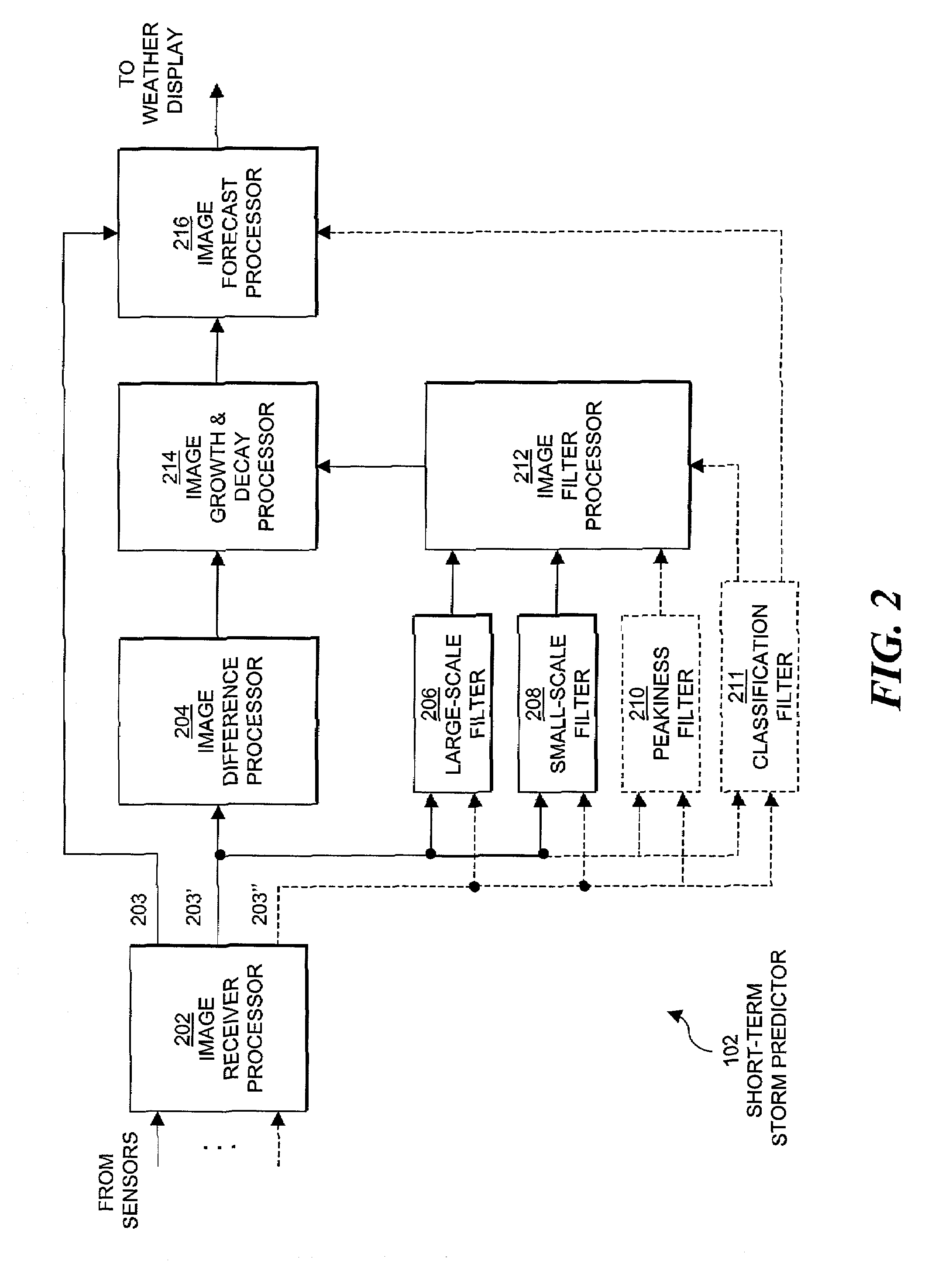Method and apparatus for short-term prediction of convective weather
a convective weather and short-term prediction technology, applied in the field of methods and equipment, can solve the problems of large operator interaction, inaccurate forecasts, and general insufficient accuracy and reliability of these systems for many applications, and achieve the effect of improving accuracy and reliability
- Summary
- Abstract
- Description
- Claims
- Application Information
AI Technical Summary
Benefits of technology
Problems solved by technology
Method used
Image
Examples
Embodiment Construction
Short-Term Convective Weather Predictor System Overview
[0028]FIG. 1 depicts a system block diagram of a weather sensing and prediction system 100 including one embodiment of the invention for predicting the initiation, growth and decay of convective weather, such as cumulus cloud formations and thunderstorms. The system 100 includes a short-term storm predictor 102 receiving meteorological data from one or more external sources and a weather forecast display 110. The weather forecast display 110 provides an image to an observer or image data appropriate for processing by additional processes or components (not shown). The external sources can include weather sensing systems, such as ground-based weather sensors 104 (for example, weather radars, airborne weather sensors, and space-based sensors). Alternatively, the external sources can include other computer systems, such as computers forwarding weather image files from the external systems and computers that provide simulated weathe...
PUM
 Login to View More
Login to View More Abstract
Description
Claims
Application Information
 Login to View More
Login to View More - R&D
- Intellectual Property
- Life Sciences
- Materials
- Tech Scout
- Unparalleled Data Quality
- Higher Quality Content
- 60% Fewer Hallucinations
Browse by: Latest US Patents, China's latest patents, Technical Efficacy Thesaurus, Application Domain, Technology Topic, Popular Technical Reports.
© 2025 PatSnap. All rights reserved.Legal|Privacy policy|Modern Slavery Act Transparency Statement|Sitemap|About US| Contact US: help@patsnap.com



